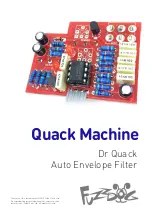
Ⅴ.
Troubleshooting and solutions The table lists a general troubleshooting method for the user reference.
When the user can not solve the situation, please contact with the suppliers directly.
DAILY MAINTENANCE
35
DAILY MAINTENANCE
36
Troubleshooting
Reason
Solutions
No image after
placing fiber
1.Not power on
2.Fiber does not enter V-groove or v-groove has dirty
3.The length of the fiber is too short or broken
4.The align mechanism is not initialized
5.No signal detected for close windshield cover
1.Press the power key
2.Re-place the fiber or brush the V-groove with alcohol
3.Re-cleave the fiber
4.Press RESET key
5.Check if the magnetic screw is loose or the magnet
on windshield cover is fall off
splicing loss
is too high
1.The cleaving quality of the fiber is poor
2.Splice parameters unreasonable
3.Arc center offset (rarely occurs)
1.Re-cleave the fiber
2.Repeat the ARC calibration
3.Repeat the ARC calibration
The ARC does
not discharge or
has scars
1.The cleaving quality of the fiber is poor
2.The splice parameter is too small
3.The electrodes has adsorbed dust
4.Running data error
1.Re-cleave the fiber face
2.inceasse the cleaning voltage; do ARC calibration again
3.Clean the electrode with a brush
4.Turn off and restart.
The spliced area
becomes thinner
1.Splicing parameters unreasonable, splice voltage
is too high
2.Splicing overlap is too small
1.ARC calibration
2.Increase the amount of splicing overlap
splicing zone is
thicker
1.Splice parameters unreasonable, splice voltage is
too small
2.Splicing overlap is too big
1.ARC calibration
2.Reduce the amount of splicing overlap
Ⅵ.
Common faults during the use of the machine
Optical fiber fusion splicer is a precision instrument, usually in the use of the process should be strict
attention to avoid the invasion of dust into the inside of the machine and often clean. In the usual cleaning
maintenance is mainly clean V groove, lens. The v-groove is mainly scraped back and forth along the
bottom of the slit with a cutter, and then brushed clean with a brush. Clean the lens mainly with a clean
cotton swab, if necessary can dip a little alcohol to wipe (note that alcohol is just wet cotton ball not too
much, to avoid running into the lens).
Splicing has bubbles
(usually occurred in
the multi-mode fiber
splice)
1. Fiber end with burr, not flat
2.Fiber quality is not good
1.Increase the cleaning voltage
2.Re-cleave fiber
3.Replace to qualified fiber or cut off a part of the
existing fiber and try again.
Troubleshooting
Reason
Solutions
Splicing points
have lateral
shadows
1.Fiber core does not match (type or core diameter
is different)
2.Multimode fiber appear very light shadows after
splicing
1.Re-match the fiber to make the same type of fiber on
both sides
2.1t is normal, does not affect splice strength and
signal transmission quality
Image is tilted
1.Fiber not enter the V-groove completely
2.V-groove is dirt
1.Re-place the fiber
2.Clean the V-groove with alcohol and brushes
The image is on the
top or bottom of the
display
1.V-groove is dirt
2.Fiber not enter the V-groove
1.Clean the V-groove with alcohol and brushes
2.Re-place the fiber
The image is blurred
1.Fiber not enter the V-groove
2.V-groove is dirt
1.Re-place the fiber
2.Clean the V-groove
Cleave can not
cut off the fiber
1.Cladding layer is not stripped
2.Cladding layer stripped too short and the rubber
pressure on both sides of the blade did not compress
the fiber
3.The cutting point of the blade becomes blunt or
broken
1.Use a Miller clamp to peel off the cladding
2.The length of the stripped cladding should be
longer than 30 mm
3.Loosen the retaining screw in the middle of the blade
and turn the blade at an angle





































